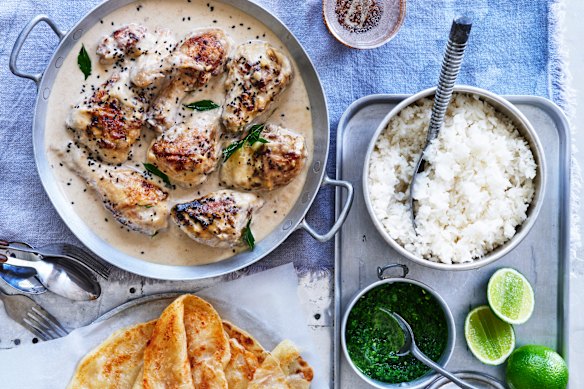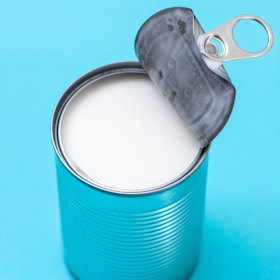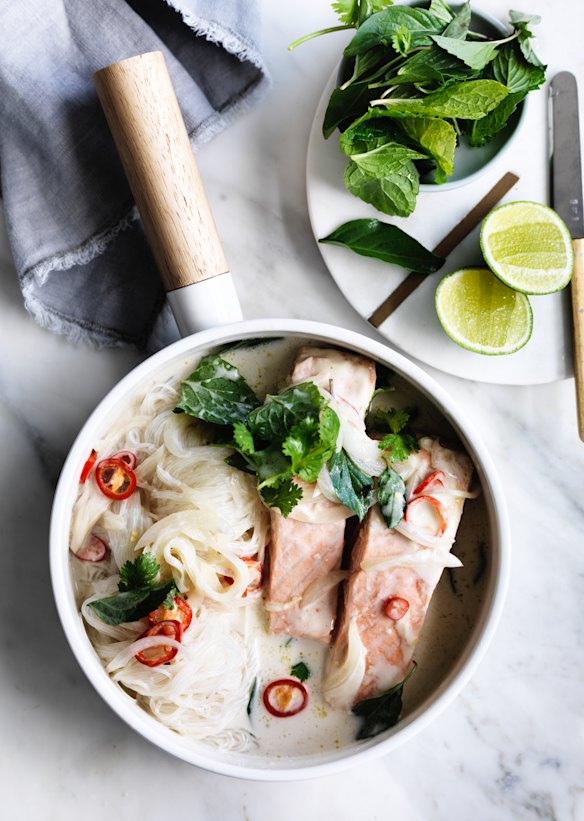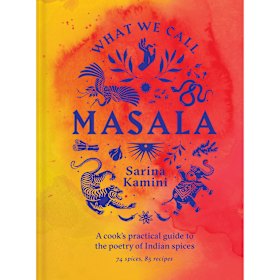Is coconut milk the same as coconut cream and are they interchangeable?
Cookbook writer Sarina Kamini dives into the creamy world of coconut flesh, and how to use it to enhance your cooking.
The detail of a dish is often the difference between “good” and “delicious”, and so many questions in my cooking classes are prefaced with “… does it really matter?”
Does it matter if I use coconut oil instead of ghee? Cumin powder and not cumin seed? Or coconut cream instead of coconut milk? Will it still work?

Of course. I mean, mostly. But knowing the difference between apparently similar ingredients means you’ve got a better chance of adjusting the recipe so that nothing gets lost in translation. Understanding the “why” is always helpful when it comes to thinking about the “how”.
These are small things. But when it comes to really yummy food, the small things count.
So, is coconut milk the same as coconut cream?
No, is the short answer. Both are made from the flesh of brown coconuts, but coconut cream has less water, a higher fat content, a thicker texture and a richer taste than coconut milk. The least complicated simile is like the difference between milk and cream.
How to use them
Think of coconut milk as a conductor of flavour. In Asian and Subcontinental kitchens, we’re always looking for ways to harmonise the strident, pungent and often contradictory nature of spices or masala. Ingredients such as pureed tomatoes and coconut milk come into the pan and just soften any sharp angles or hard aromatic edges: clove buds and red chilli can drive a lot of heat and intensity together, but wrap them both in coconut milk and a hard dialogue becomes a warm conversation.

The higher fat content of coconut cream has a different impact. Whereas coconut milk supports spice from below, the heavier aromatic weight of coconut cream can come down on spice or masala like a heavy blanket. The fat muffles nuance.
With that in mind, coconut cream works better as a finishing touch that’s accounted for in the initial spicing – if I know I’m introducing coconut cream towards the end of a cook, I’ll probably go a little harder with my hot, dark and pungent categories of spice: an extra green chilli or two, a darker toast on my cumin powder, and a star anise to join my cloves. Stronger tastes to punch up and through the richness.
What can go wrong?
Not too much with coconut milk. It’s the easier to handle of the two options. But with coconut cream, you’ve got to watch stove top temperatures. Because of its higher fat content, intense or protracted high heat cooking will split coconut cream.

Splitting an ingredient isn’t necessarily the end of the world – in the Kashmiri Hindu cooking tradition, we’re often deliberately splitting yoghurt or milk when cooking with ghee or mustard oil and masala at high heat in order to achieve a specified taste. But it can be the end of the dish if the split isn’t planned: like anything in the kitchen, the texture of a dish is a composite and every decision of the cook is factored in. When coconut cream splits unintentionally, imbalances in bitterness and heat – two of the least naturally pleasurable aspects of spice – can occur as a result.

Gimme an easy start
Use coconut milk in your favourite curry to soften and sweeten the spice, adding it after the spices have been tempered in oil or fat but before you introduce the produce. This will work in everything from your favourite chicken curry to a trad gobi sabji.

I love coconut cream as a finish to pumpkin soup with fresh coriander, or added in the last minutes of a basic seafood curry for a bit of extra luxury.
Sarina Kamini is a Kashmiri-Australian cookbook author, teacher, cook and former food journalist, editor and reviewer who regularly films and cooks in professional and home kitchens across India to record and share the message of masala. Her book What We Call Masala published by Murdoch Books is out on July 29.
The best recipes from Australia's leading chefs straight to your inbox.
Sign up